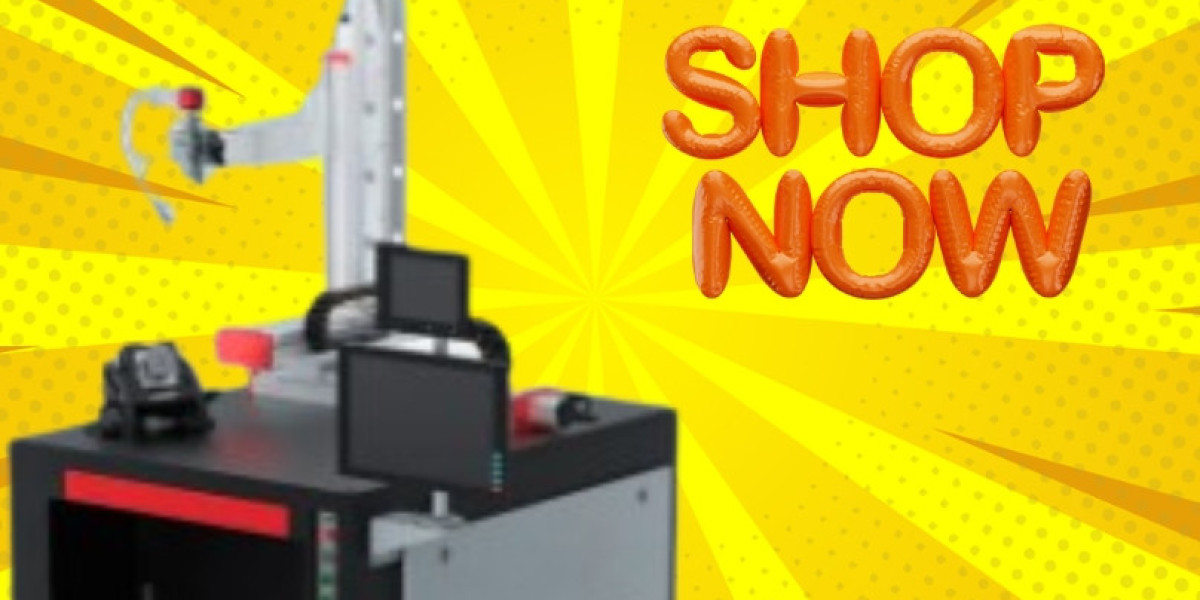Imagine a cozy room that stays warm in the winter while fresh air flows in, all without wasting energy. This is where single room heat recovery comes into play. As energy costs rise and environmental concerns grow, finding efficient ways to keep our living spaces comfortable has never been more important. Single-room heat recovery systems are innovative solutions that allow you to enjoy clean air while conserving warmth a win-win for both your wallet and the planet. Whether you're looking to improve indoor air quality or reduce your carbon footprint, understanding single-room heat recovery could be the key to achieving a healthier home environment.
What is Single Room Heat-Recovery?
Single Room Heat-Recovery is a clever technology designed to enhance indoor air quality while conserving energy. It operates by efficiently exchanging stale, warm air with fresh outdoor air without losing valuable heat. At its core, the system uses a heat exchanger. This component captures warmth from the outgoing air and transfers it to the incoming cold air. As a result, your space remains comfortable year-round.
This method not only keeps homes cozy but also reduces reliance on heating systems, leading to lower energy bills. Ideal for bedrooms or home offices where ventilation is crucial, single-room heat recovery units offer an effective solution for individual spaces rather than whole-house systems. They are perfect for those seeking efficiency without major renovations or complicated setups.
How Does Single Room Heat-Recovery Work?
Single Room Heat-Recovery systems are designed to optimize indoor air quality while minimizing energy loss. They function by extracting stale, warm air from the room and transferring its heat to incoming fresh air. This process utilizes a heat exchanger, which separates the outgoing and incoming airflow. As warm air exits, it heats the cooler incoming fresh air without mixing them together. This ensures efficient temperature regulation.
The system operates quietly in the background, circulating comfortable airflow throughout your space. It continuously works to maintain optimal conditions without requiring extensive renovations or ductwork. When you turn on a Single Room Heat-Recovery unit, it begins this intricate dance of airflow almost immediately. The result is a fresher atmosphere that feels natural and inviting all year round—without excessive energy consumption or increased utility bills.
Benefits Of Using Single Room Heat Recovery Ventilator
Single Room Heat Recovery Ventilator offer a range of advantages that can significantly enhance indoor comfort. These units efficiently reclaim warmth from stale air, allowing fresh outdoor air to enter without wasting energy. One of the key benefits is improved indoor air quality. By continuously exchanging air, they help reduce humidity and eliminate pollutants, creating a healthier living environment. Energy savings are another major perk.
Since these systems recover heat that would otherwise be lost, they lower heating costs during colder months. This translates into reduced energy bills over time. Moreover, installation is often straightforward compared to whole-house systems. Homeowners can enjoy efficient ventilation without extensive renovations or ductwork. Single Room Heat-Recovery systems operate quietly in the background. They provide consistent airflow while maintaining peace and tranquility within your space.
Types Of Single Room Heat-Recovery Units
Single Room Heat-Recovery units come in various designs, each tailored for specific needs. The most common types include wall-mounted and ceiling-mounted units. Wall-mounted options are discreet and ideal for smaller spaces, blending seamlessly with your interior. Ceiling-mounted units offer a different advantage. They can efficiently serve larger rooms while maintaining optimal airflow throughout the space. This design often works well in areas with high ceilings.
Another popular choice is portable heat recovery systems. These versatile devices allow you to move them from one room to another as needed, providing flexibility without permanent installation. Ducted systems represent another variation, using existing ductwork to distribute recovered heat more widely across multiple rooms. Each type offers unique benefits depending on your living situation and preferences, making it essential to choose wisely based on your home’s layout and heating requirements.
Installation Process for Single Room Heat-Recovery
Installing a Single Room Heat-Recovery system can be straightforward, making it an appealing choice for many homeowners. The process typically begins with selecting the right unit based on your space and needs. Next, you’ll need to identify the optimal location for installation. This is crucial as it affects efficiency and airflow. Most units are mounted on walls or ceilings, depending on design preferences and space constraints.
Once you have chosen a spot, you'll prepare the area by ensuring there’s adequate access to power sources and ventilation pathways. Proper ducting is essential to facilitate air exchange without leaks. After securing all components, follow the manufacturer's guidelines meticulously during assembly. Testing should follow installation to ensure everything operates smoothly before sealing up any ducts or openings. Check that all connections are secure and that airflow is unobstructed for maximum performance.
Maintenance And Upkeep of Single Room Hrv
Maintaining Single Room Hrv is essential for optimal performance. Regular checks can prevent minor issues from becoming major problems. Start by cleaning or replacing filters every few months. Dust and debris can accumulate, reducing efficiency. A clean filter ensures proper airflow and effective heat exchange. Inspect the unit’s exterior for any visible signs of wear or damage.
Addressing these concerns early helps prolong the lifespan of your system. Pay attention to noise levels during operation. Unusual sounds may indicate that something isn’t functioning correctly and requires immediate attention. Consider scheduling professional maintenance at least once a year. Experts can provide insights into the health of your system and suggest improvements tailored to your needs.
Cost Efficiency of Using Single Room Heat-Recovery
Single Room Heat-Recovery systems offer notable cost efficiency that can significantly lower your energy bills. By recovering and reusing heat from stale air, these units minimize the need for additional heating sources. This technology works by transferring warmth from outgoing air to incoming fresh air. As a result, you maintain a comfortable indoor temperature without over-relying on central heating or electric heaters.
Moreover, installation costs are generally lower than whole-house systems. This makes single-room solutions accessible for various budgets. Long-term savings also come into play as homeowners notice reduced energy consumption month after month. The initial investment quickly pays off through decreased utility bills and efficient energy use. Additionally, many of these units have low-maintenance requirements. This means fewer expenses related to upkeep and repairs in the future.
Environmental Impact of Single Room Heat-Recovery
Single Room Heat-Recovery systems significantly reduce energy consumption. By reusing heat from indoor air, they minimize the need for additional heating sources. This leads to lower carbon emissions compared to traditional heating methods. These units improve indoor air quality without wasting energy. Fresh, filtered air is introduced while stale air is expelled, creating a healthier living environment. This balance can contribute positively to overall well-being. Moreover, less reliance on fossil fuels means a reduced ecological footprint.
As homes become more energy-efficient, our dependence on non-renewable resources declines. The implementation of Single Room Heat-Recovery also supports sustainability efforts in building design and renovation projects. Homeowners are increasingly prioritizing eco-friendly solutions that align with modern environmental goals. By embracing this technology, individuals can make meaningful contributions toward combating climate change while enhancing their comfort at home.
Factors To Consider Before Purchasing a Small Heat Recovery Ventilator
When choosing a Small Heat Recovery Ventilator, several factors come into play. Start with the size of your space. Ensure the unit's capacity matches your room dimensions for optimal performance. Consider the type of heating currently in use. Compatibility is key to seamless integration and efficiency. Next, evaluate noise levels; some units can be louder than others, impacting comfort during quiet times at home. Energy efficiency ratings are crucial as well.
Look for models that promise good returns on energy consumption over time. Installation requirements also need attention. Some systems may require professional help while others could be DIY-friendly. Don’t forget about filter maintenance schedules—regular upkeep keeps systems running efficiently and air quality high. Think about warranty options offered by manufacturers; this reflects their confidence in product longevity and reliability.
Energy Efficiency Advantages of Single Room Heat-Recovery Units
Single Room Heat-Recovery units are a game changer for energy efficiency. They capture warmth from stale air being expelled and use it to preheat incoming fresh air. This process minimizes the need for additional heating, leading to lower energy consumption. These systems work silently in the background while maintaining optimal indoor temperatures. By reusing existing heat, they help reduce reliance on conventional heating methods, which can be costly during colder months.
Moreover, single room solutions allow homeowners to target specific areas of their living space. This focused approach maximizes comfort without wasting energy across unoccupied rooms. With reduced power usage comes a decrease in utility bills. Investing in these units not only benefits your wallet but also contributes positively to environmental sustainability by lowering carbon emissions associated with traditional heating systems.
Cost Considerations for Small Hrv Units Solutions
When considering small Hrv Units solutions, understanding the costs is essential. Initial investment can vary widely based on the unit's size and features. While some models are more affordable, high-efficiency options may come with a steeper price tag. Installation expenses also play a significant role in overall cost. Professional installation ensures optimal performance but adds to your budget. DIY installations might seem tempting; however, improper setup can lead to inefficiencies.
Long-term savings should not be overlooked either. These systems can lower energy bills by maximizing heat retention and minimizing loss during colder months. This efficiency translates into tangible financial benefits over time. Keep in mind that maintenance costs are another factor to consider. Regular upkeep helps maintain system efficacy and extends its lifespan, which can save money in the long run. Weighing initial expenses against potential savings will help determine if a single-room heat recovery solution fits within your financial goals.
Single Room Heat-Recovery vs. Whole-House Ventilation: Pros and Cons
Single Room Heat-Recovery systems focus on individual spaces, offering targeted ventilation and energy savings. They work efficiently in rooms that require specific climate control, making them ideal for apartments or smaller homes. On the other hand, whole-house ventilation provides a comprehensive solution by maintaining air quality throughout larger properties. This system ensures consistent airflow across all living areas but may consume more energy due to its broader scope.
The advantage of single room units is their ease of installation and lower upfront costs. However, they might not adequately address air circulation needs in multi-room homes. Heat systems excel at eliminating stale air and distributing fresh air evenly. Yet, these can be more complex to install and maintain, requiring professional expertise. Choosing between them depends on your space requirements, budget constraints, and personal preferences regarding comfort versus efficiency.
Conclusion
Single Room Heat Recovery offer a compelling solution for those seeking energy efficiency and comfort. These units effectively manage indoor air quality while minimizing energy loss. Investing in such technology not only enhances your living space but also contributes positively to the environment. With reduced reliance on traditional heating methods, homeowners can enjoy lower utility bills. Understanding the options available allows you to choose a system tailored to your needs.
FAQs
What is Single Room Heat Recovery, and how does it function?
Single Room Heat Recovery refers to a ventilation system designed for individual rooms. It works by extracting stale air from inside a room while simultaneously bringing in fresh outdoor air. The key feature is its ability to transfer thermal energy between these two streams without mixing them.
How often should I maintain my single-room heat recovery unit?
Regular maintenance typically involves checking filters every three months and cleaning or replacing them as needed. It's also wise to have an annual professional inspection for optimal performance.
Are there any specific types of rooms where a single-room heat recovery system is more effective?
These systems excel in smaller enclosed spaces like bedrooms or offices where natural ventilation might be limited. Their design allows efficient airflow management tailored to individual room needs.
Can installing a single-room heat recovery unit lead to noticeable reductions in energy bills?
Yes, many users report significant savings on heating costs due to the improved efficiency of their HVAC systems when integrated with these units. By reusing warm air, they reduce reliance on traditional heating methods during colder months.
Related Business Listings |









